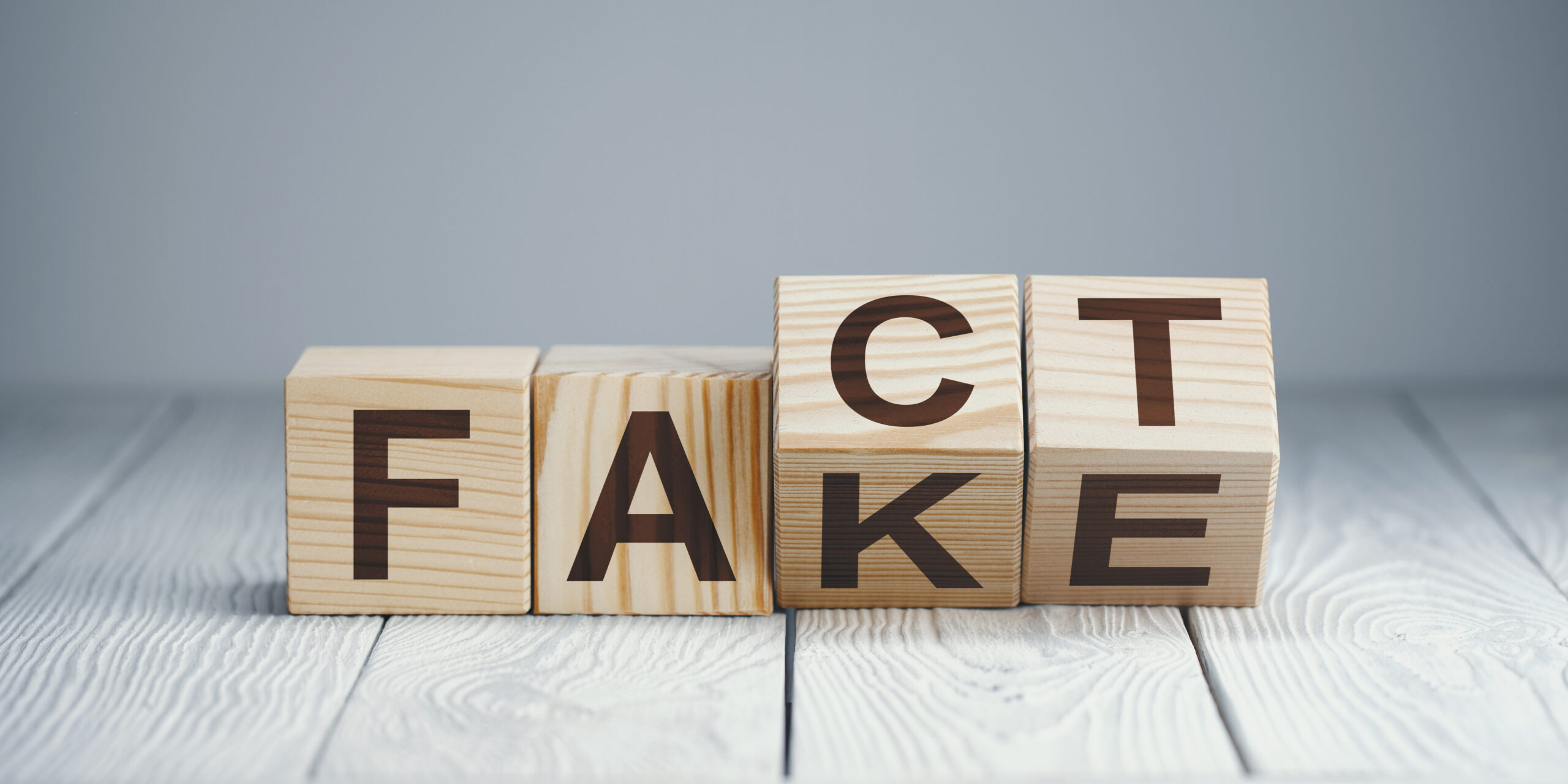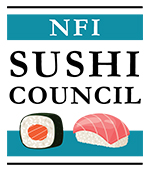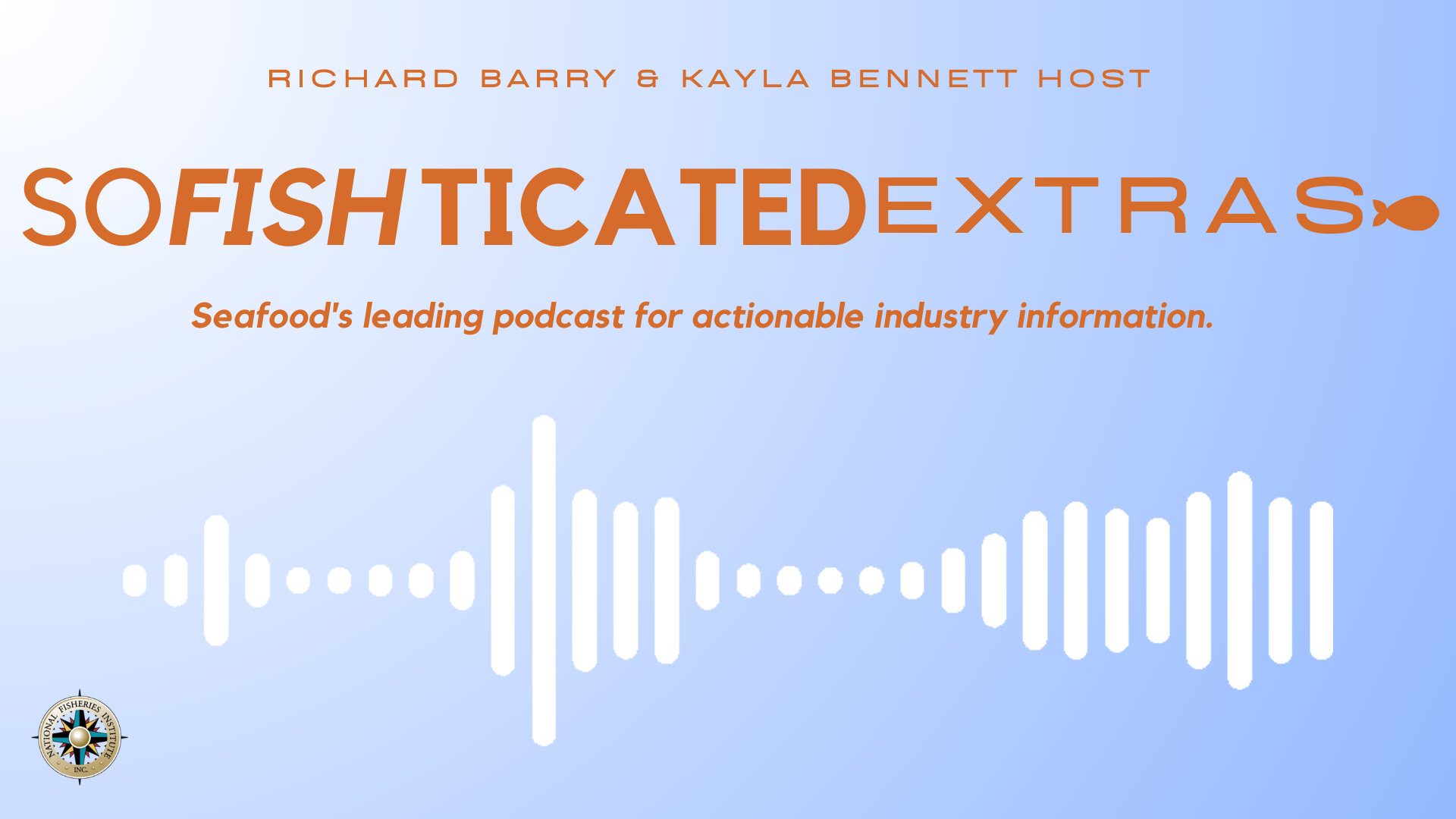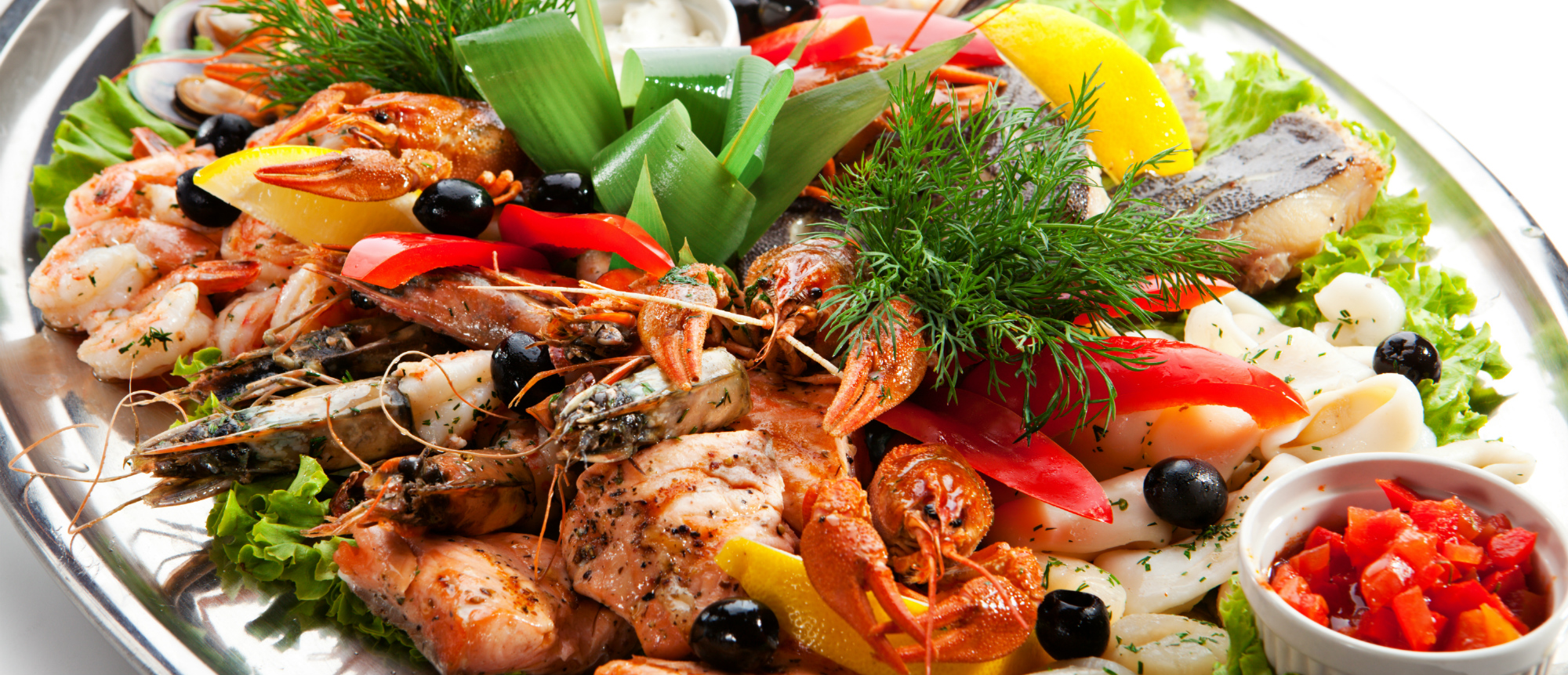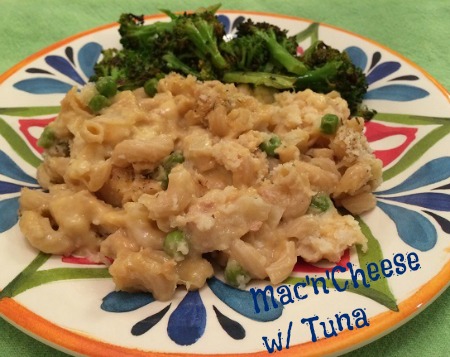All posts by NFI Nutrition
Nutritionist Beware: Risk Based Studies Confuse Consumers on Seafood Advice
Whenever a new scientific study is released, the press immediately searches for the headline. But too often that means oversimplifying or overemphasizing the most provocative results while ignoring the messy and complex evidence beneath.
Take the recent study funded by the National Institute of Environmental Health Sciences (NIEHS). It concludes that the neurocognitive benefits of aerobic exercise may be blunted by high levels of mercury exposure. In fact, more than 90 percent of the participants in the study were exposed to levels of methylmercury above EPA limit of 5.8 mcg/L.
To a lay reader in the U.S., that might sound alarming. But it’s important to look beyond the headline. In this case, the research population came entirely from the Faroe Islands, located 200 miles north of England, where high-mercury whale meat is a major component of the diet.
But Americans—who eat far less fish, and virtually no whale meat to speak of! —have average levels of mercury far below the study population’s, and well within EPA recommended limits. So the study is of limited use. Especially since it doesn’t detail what other types of fish the test population were eating, or how much.
The NIEHS press release does wisely cite the FDA draft advice for pregnant women and children on recommended levels of seafood consumption. This advice is in turn based on the FDA’s 2014 Net Effects report, which looked at over 100 scientific studies analyzing both the risks and the rewards of seafood consumption.
By contrast, the NIEHS study focuses solely on risks, without considering the rewards. That’s fine as a piece of research, but less helpful in informing life decisions. It’s like a study about whether you should buy a car that focuses only on auto accidents.
In the case of seafood consumption, the science is abundantly clear: the health benefits of eating fish greatly outweigh any hypothetical risks. The Omega-3 fatty acids contained in fish are essential for healthy brain and eye development, and long-term cardiovascular health. One long-term NIH study showed that children whose moms cut back on seafood during pregnancy had significantly lower developmental and IQ outcomes.
That’s why following the 2015 – 2020 Dietary Guidelines for Americans—which recommend eating more fish than most Americans currently do—is so critical. Pregnant women should have two to three servings of fish a week, while avoiding four fish high in mercury: tilefish from the Gulf of Mexico, shark, swordfish, and king mackerel.
Rima Kleiner, MS, RD
National Fisheries Institute
How to Give Positive Seafood Sustainability Advice
University of Washington fisheries expert Dr. Ray Hilborn and NFI’s Registered Dietitian, Jennifer McGuire, spoke with dietitians at the 2016 Sports, Cardiovascular, and Wellness Nutrition (SCAN) Symposium: Prescriptions for Sustainable Health, Performance and Practice. The conference took place in the land of sustainable living, Portland, OR, and Dr. Hilborn and Jennifer discussed how to incorporate seafood sustainability science into nutrition advice.
Dietitians and the families they work with are used to the old good fish/bad fish list approach to the topic of seafood sustainability. But Dr. Hilborn, who literally wrote the book on the evolution of marine conservation, made the following points that call into question a prescriptive green fish/red fish approach:
- Fish lists are subjective and only consider the very specific issue of marine impacts. For example, skipjack tuna is plentiful, but shows up on both the green and red list of this fish card depending on how it’s caught (poll vs. net). Net gets dinged because of bycatch, but what isn’t mentioned is the increased carbon footprint of poll fishing. The bottom line is that there are trade-offs, and growing/harvesting ANY type of food makes some environmental mark.

- Seafood is one of the most sustainable food choices, relatively speaking. Sometimes we forget that people have to eat something, and seafood has among the lowest overall environmental costs compared to other types of food.
 So if the lists are no good, what are some sound resources for seafood sustainability advice? Jenn shared the following ideas for people who simply want to ensure their food choices are good for themselves and the environment:
So if the lists are no good, what are some sound resources for seafood sustainability advice? Jenn shared the following ideas for people who simply want to ensure their food choices are good for themselves and the environment:
- NOAA Fish Watch – This site features science-based, well-rounded profiles of all different species of fish including information on the population, fishing rate, and habitat impacts as well as taste, texture, and health benefits.
- Grocery stores and restaurants – Many retailers have seafood sustainability policies ensuring every type of fish within their store meets standards for sustainability.
- 2015 Dietary Guidelines Advisory Committee Report – The DGAC brought in expert marine science consultants and made three conclusions related to seafood sustainability.
-
Eat a wide variety of seafood. Whether wild-caught or farmed, most species of fish have about the same amount of omega-3s.
-
The recommendation to eat seafood at least twice each week could likely be met with continued careful fishing of wild seafood and increased amounts of farm-raised fish.
-
Both farmed and wild-caught seafood are safe and healthy choices.
-
Seafood has such a promising story from both a nutrition and sustainability standpoint.
Nutrition Headline Knee-slappers
According to this week’s nonsensical nutrition headlines, vegetable oils and tuna are out to get you.
First up, a recent study by Cornell, published in the journal Molecular Biology and Evolution, indirectly linked vegetable oils to heart disease and cancer and directly linked the researchers’ names to outrageous headlines including, “Being a vegetarian could kill you, science warns.” For some important context, the researchers didn’t measure the kinds of oils consumed or increased health problems among the population studied. More details on the convoluted path to the comical headlines is available here.
This next one isn’t even a published study. Now all it takes is a grad school dissertation to result in the headline, “Eating too much tuna may increase risk of breast cancer.” Here’s the left out details:
- This report includes no primary data. Rather, it looks solely at associations (canned tuna consumption, blood mercury levels, and breast cancer incidence) within secondary data not originally designed for this purpose.
- The results from this report are unable to provide any evidence of causation.
- Known risk factors for breast cancer – namely family history and genetic predisposition – were not considered.
- The role of omega-3s, which canned tuna is a leading source of in the U.S., and which have been linked to decreased risk of cancer, were not considered.
- The actual source of mercury in the data reviewed for the report is unknown.
- The average levels of mercury in canned tuna in the data reviewed for the report consistently fall below the FDA level of concern (1.0 ppm).
- According to this report, smoking and increased BMI decreased odds of breast cancer, showing the shortcomings of this methodology.
For science-based information on fish and cancer risk, see these takeaways from the reputable, authoritative organization, the American Institute for Cancer Research.
Fish and Cancer Risk: 4 Things You Need to Know
You probably know that fish is part of a healthy diet. Fish — and its healthy fats — are well recognized for their heart health benefits. But research on the role that fish may play in cancer protection is less clear. And if you’re one of the many Americans who enjoys fish, there’s a good chance you also have concerns about its possible contaminants.
When it comes to cancer risk and overall health, here are the fish basics.
1. Nutrition Treasure
Any given serving of fish is packed with protein, and contains B vitamins and minerals including potassium and selenium. One serving (3-ounces) contains from 80 (lean fish like cod) to 150 calories (fattier fish, like salmon).
Higher fat fishes with their omega-3 fatty acids are the ones most linked to heart health benefits. Omega-3 fats are found in fish like salmon, mackerel, herring, lake and rainbow trout, sardines and albacore tuna.
2. Fish and Cancer Risk
AICR’s new report on liver cancer reveals hints that eating fish may protect against this cancer, although the evidence was not strong enough to form a conclusion. Some population studies have also linked higher fish consumption with reduced risk of other cancers, including colon and breast.
In lab studies, the omega 3-fats of fish are well researched. The major omega-3 fats in fish oil are called DHA(docosahexaenoic acid) and EPA(eicosapentaenoic acid). Lab studies have suggested these fats alter colon cell function and may cut down on inflammation.
But when it comes to fish itself linking to reducing cancer risk, more research is needed.
Although fish oil is a popular dietary supplement, for people with no heart disease, the American Heart Association says getting omega-3 fatty acids through foods is best. For cancer protection, AICR recommends that people do not rely on supplements.
3. Health Trumps Contaminants (with caveats)
Almost all fish and shellfish come with at least some contaminants, accumulated in waters with pollutants and pesticides. For most people eating a variety of fish, either farmed or wild-caught, the levels of contaminants are too small to cause harm, according to government guidelines. The 2010 US Dietary Guidelines general recommendation for American adults is to eat about 2 servings (approximately 8 ounces cooked) of a variety of fish and seafood per week.
Some people, including children, breastfeeding women and women who are or who could become pregnant, should steer away from certain types of fish. One toxin of concern is mercury, a heavy metal that can harm an unborn baby or young child’s developing nervous system if enough is consumed. Large fish that live the longest, such as sharks and swordfish, contain the highest amounts. For the specific recommendations visit the EPA’s What You Need to Know about Mercury in Fish and Shellfish. Another good resource on fish selection is the Monterey Bay Aquarium Seafood Watch.
4. Fish – One Part of the Whole
Again and again, research shows that people eating diets with a moderate amount of seafood have lower risk of cancer and other chronic diseases and longer lives.
This could be due to other parts of the diet. For example, if you’re eating more fish for dinner, you may be eating less red and processed meats, which increase colorectal cancer risk. Fish is a staple of several dietary patterns also linked to lower cancer risk, such as the Mediterranean diet. People eating a Mediterranean diet are also eating plenty of beans, whole grains, vegetables and other plant foods, which all play a role in reducing cancer risk.
These healthy fish-containing dietary patterns are also low on sugary foods and drinks and refined grains. Taken together, these diets high in plant foods, moderate in fish and seafood and low in sugar can help people stay a healthy weight. Overweight and obesity is now linked to increased risk of 10 cancers, including postmenopausal breast, liver and colorectal.
For delicious fish and seafood recipes, check out AICR’s Healthy Recipes.
Additional facts about breast cancer prevention are available here.
Herb-Encrusted Salmon
We have one food rule in our house: Dinner must be simple.
And, this is one reason why we eat seafood at least twice a week for dinner. Fish cooks so quickly and rarely needs fancy or gourmet embellishment.
I love this salmon dish. It literally takes less than 20 minutes to cook, from start to finish.
While the grill was preheating, we mixed together whatever dried herbs and spices we had on hand–this one was a mixture of sea salt, black pepper, fennel seeds, chili powder, paprikar, mustard seeds and tarragon. After drizzling a little olive oil on both sides of the salmon, we patted the herb-spice mixture on the top of the fillets and grilled for about 3-4 minutes each side, until cooked through. Seriously, the roasted broccoli and cauliflower and the baked sweet potato tots took longer to cook than the salmon.
The result? A delicious herb-encrusted salmon that paired perfectly with the veggies. Such a simple way to eat the MyPlate way!
TELL US: What are your favorite herbs and spices to use on seafood? Please share with us. We’d love to hear from you!
Posted by Rima Kleiner, MS, RD
Breaded Cod Burritos
This Breaded Cod Burrito is a total food fix. I was actually craving a Mexican restaurant burrito, complete with gooey refried beans and cheese.
But, there were a few things that kept me from my Mexican burrito. I was working from my home office, and there was no time to run out for lunch. So, I did what any hungry person at home does… open my refrigerator and [sigh] stare at the contents, hoping something delicious will magically appear. And, it did.
After I noticed the leftover breaded cod my husband had made the night before, I grabbed a whole wheat tortilla, some sweet bell peppers and an avocado. A leftover fish burrito and a mixed greens salad later, I was happily chomping away. Sure, it wasn’t the gooey refried bean and cheesy burrito I had in mind, but it was so much better, fresher and more nutritious. Plus, it was such a tasty way to sneak more fish and veggies into my day.
TELL US: How do you sneak in some extra omega-3s into your week? Please share. We’d love to hear from you!
Posted by Rima Kleiner, MS, RD
Deviled Eggs with Smoked Salmon and Herbs
Happy 2016!
I enjoy this time of year… right after New Year’s when the holiday bustle is gone but everyone seems busy. People are re-invigorated and inspired to make changes. And while I’m as excited as the next person to move on to a new year, I have to share this deviled eggs recipe I made on New Year’s Eve.
I found this Deviled Eggs with Smoked Salmon and Herbs recipe on CookingLight.com. Topped with a mix of fat-free sour cream, reduced fat mayonnaise, mustard, chives and smoked salmon, these eggs made for a super tasty NYE appetizer. Three friends remarked to me that these deviled eggs were “DELICIOUS!” Not only did the smoked salmon lend a saltiness (which meant I didn’t need to add salt), the salmon also provided omega-3s and extra protein.
New Year’s Eve might be over, but I’ll be toting these deviled eggs along with me to other parties.
TELL US: Smoked salmon makes a great bagel topping, but how else do you use lox? Please share. We’d love to hear from you!
Posted by Rima Kleiner, MS, RD
Feast of the Seven Fishes
The winter holidays are in full swing, and Christmas is the hit this week. If you’re cooking this Christmas Eve, try creating your own Feast of the Seven Fishes.
The origins of this southern Italian Christmas Eve dinner are not entirely known and there are no clear-cut rules, so you can’t go wrong with a seafood-based feast. While some people cook five seafood dishes (with a vegetable or palate cleanser and a dessert) and some cook more, even adding one seafood dish to your Christmas repertoire will help you meet your seafood recommendations for a healthy heart and a healthy waistline.
Here are some simple recipes to try this holiday season.
Appetizer (course 1): Shrimp Bruschetta with Black Olive & Anchovy Tappanade
Salad (course 2): Crab Salad Nicoise
Grilled seafood (course 3): Cod Filets with Greek Salsa
Pasta dish (course 4): Smoked Salmon Pasta
Stew/soup (course 5): Sicilian Tuna Soup
Wishing you healthy, safe and happy holidays!
TELL US: Do you have a favorite holiday seafood dish? If so, please share. We’d love to hear from you!
Posted by Rima Kleiner, MS, RD
Macaroni & cheese w/ tuna
Old Man Winter has been in full force on the East coast this week. These cold temps ran me into the kitchen to whip up some comfort food.
Soup is my ultimate cold weather comfort food. But, mac & cheese runs a close second.
Inspired by this Whole Wheat Macaroni & Cheese recipe from the blog 100 Days of Real Food, I used whole wheat elbow macaroni, nonfat plain Greek yogurt, whole wheat Panko, nonfat milk and a mix of fat-free Cheddar cheese and a reduced fat Mexican blend cheese. Wanting a little green and a lot more protein, I stirred in some frozen green peas and a pouch of tuna. Then, I threw a little more Panko on top and baked until crisp.
Paired with roasted broccoli, this comfort dish was delicious and just what Old Man Winter ordered.
TELL US: Try adding canned or pouch tuna to your next batch of mac’n’cheese and tell us about it. It’s a great way to “up” your protein and omega-3s in this favorite classic dish. We’d love to hear from you!
Posted by Rima Kleiner, MS, RD
Fish ‘n’ Chips Cod Tacos
For some strange reason, we had leftover cod and broccoli slaw from a fish and chips dinner. (My husband’s fish and chips dinner is usually gobbled up the first night!)
The next day I was craving a burrito (taco shop burrito, not overly healthy burrito, mind you). Instead, I scanned the refrigerator, trying to figure out what I could throw together for a semi-nutritious comfort lunch. Then, I spotted corn tortillas, guacamole and leftover fish and slaw. I added some black beans for a little extra fiber and a little fat free shredded Cheddar just because.
How I made my fish’n’chips cod tacos:
- Two corn tortillas
- Leftover fish from fish and chips dinner (cod covered in whole wheat panko, lightly sauteed in olive oil)
- Leftover broccoli slaw (pre-packaged broccoli slaw mixed with a little light ranch dressing)
- Scoop of canned black beans
- Scoop of pre-made guacamole
- A little fat-free shredded Cheddar
The result? Seriously delicious. So delicious, in fact, I immediately forgot about the craving for a taco shop burrito.
TELL US: What delicacies have you created from leftover fish dishes? Please share. We’d love to hear from you!
Posted by Rima Kleiner, MS, RD
move over, turkey: make room for seafood
Want to “up” the nutrients on your Thanksgiving table this year? Try adding seafood to your menu.
While seafood may not be one of the first foods that comes to mind when you hear “Thanksgiving,” seafood is beginning to make its way into the turkey-based holiday meal. According to a recent article in the New York Times, lobster is no stranger to the Thanksgiving table of Maine-based chefs.
Seafood is rich in protein, selenium, vitamin D, B vitamins and essential omega-3 fatty acids and low in calories and saturated fat, making it the natural accompianent to a calorie- and saturated fat-laden holiday table. In fact,the Calorie Control Councilestimates thatthe average American eats about 4,500 calories on Thanksgiving day alone, with about 3,000 calories from dinner alone and1,500 calories from appetizers and drinks. That’s more than two days’ worth of calories for most adults!
Boost the nutrient profile of your Thanksgiving table this year by adding some nutrient-rich seafood. Here are some easy ways to make way fo fish and shellfish this Turkey Day.
- Serve a pumpkin-shrimp bisque as a starter. Click here for a great recipe from@Epicurious.
- Try these Southern Pecan Crab Cakesfrom @Hellmann’s or a lightened-up version of crab dipan appetizer.
- Add oysters to your stuffing or dressing. There are recipes galore for oyster dressing, but this recipe for Corn Bread Oyster Dressingfrom @RachaelRaylooks scrumptious!
- Who says gravy has to be turkey-based?Make an oyster-based gravy, like in this recipe for Sage-Brined Roast Turkey with Oyster Dressing from @saveur.
- Forget the bird and serve this deliciously elegant Baked Seabass with Fennel and Mushroom Stuffing from @GoodFoodMag.
And, don’t forget to start your holiday with a protein-based breakfast, which will help to quell cravings until dinner time. Try an egg-and-lox frittata or a salmon-asparagus egg scramble.
TELL US: Do you serve seafood at Thanksgiving? If so, please share. We’d love to hear from you!
Posted by Rima Kleiner, MS, RD

